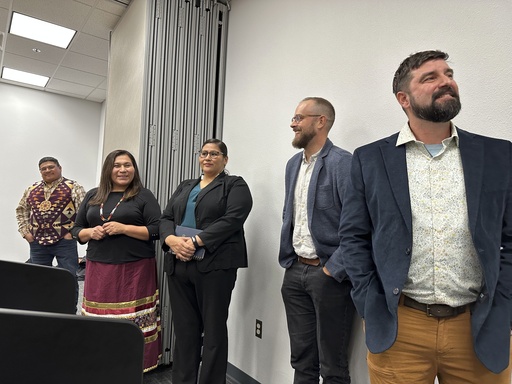
BISMARCK, N.D. — A collaboration among conservation organizations and Native American tribal members has urged President Joe Biden to establish nearly 140,000 acres of striking Badlands as North Dakota’s inaugural national monument. This initiative is supported by several tribal nations advocating for the protection of the area’s indigenous cultural heritage.
The envisioned Maah Daah Hey National Monument would incorporate 11 non-connected sections totaling 139,729 acres (56,546 hectares) in the Little Missouri National Grassland. These proposed areas would align with the well-known recreation trail of the same name and would be adjacent to Theodore Roosevelt National Park, which honors the 26th president who managed a ranch in the Badlands during his youth in the 1880s.
Michael Barthelemy, an enrolled member of the Mandan, Hidatsa, and Arikara Nation and head of Native American studies at Nueta Hidatsa Sahnish College, emphasized the importance of connecting the landscape’s narrative to its people. “When you tell the story of landscape, you have to tell the story of people. You have to tell the story of the people that first inhabited those places and the symbiotic relationship between the people and the landscape,” he stated, highlighting how both the land and the locals have shaped each other over time.
National monuments, which are analogous to national parks, are managed by the National Park Service and are typically designated by the president to safeguard significant natural features. Supporters of the monument have made multiple trips to the nation’s capital to engage with officials from the White House, the Department of the Interior, the Forest Service, and the Department of Agriculture. However, they may encounter challenges with the remaining days of Biden’s presidency and possible opposition from the upcoming Trump administration.
Should their current effort fail, the coalition intends to approach the Trump administration, believing that the concept is valuable regardless of the political leadership. Dakota Resource Council Executive Director Scott Skokos remarked on the group’s commitment to the cause.
The landscape proposed for the monument currently features numerous oil and natural gas wells, but the supporters assert that the designated areas possess no existing oil and gas leases, private property, or grazing leases that would be affected. North Dakota Wildlife Federation Executive Director John Bradley affirmed these claims, asserting that existing operations would remain unchanged.
This proposal has garnered support from the MHA Nation, the Spirit Lake Tribe, and the Standing Rock Sioux Tribe through resolutions passed by their councils. Democratic state Rep. Lisa Finley-DeVille, an enrolled member of the MHA Nation, expressed that the establishment of the monument would be instrumental in helping tribal citizens connect with their identity.
Governor Doug Burgum, selected by President-elect Donald Trump to head the Interior Department, which oversees the National Park Service, issued a statement on the topic. He noted that North Dakota exemplifies a balance between preserving significant parks, cultural heritage, and natural resources while responsibly pursuing energy development.
In response to the proposal, North Dakota Senator John Hoeven’s office mentioned that this was their initial awareness of the initiative. They expressed concern that any efforts restricting ranchers’ operations or limiting multipurpose land use, including energy development, would likely encounter resistance from Senator Hoeven.
